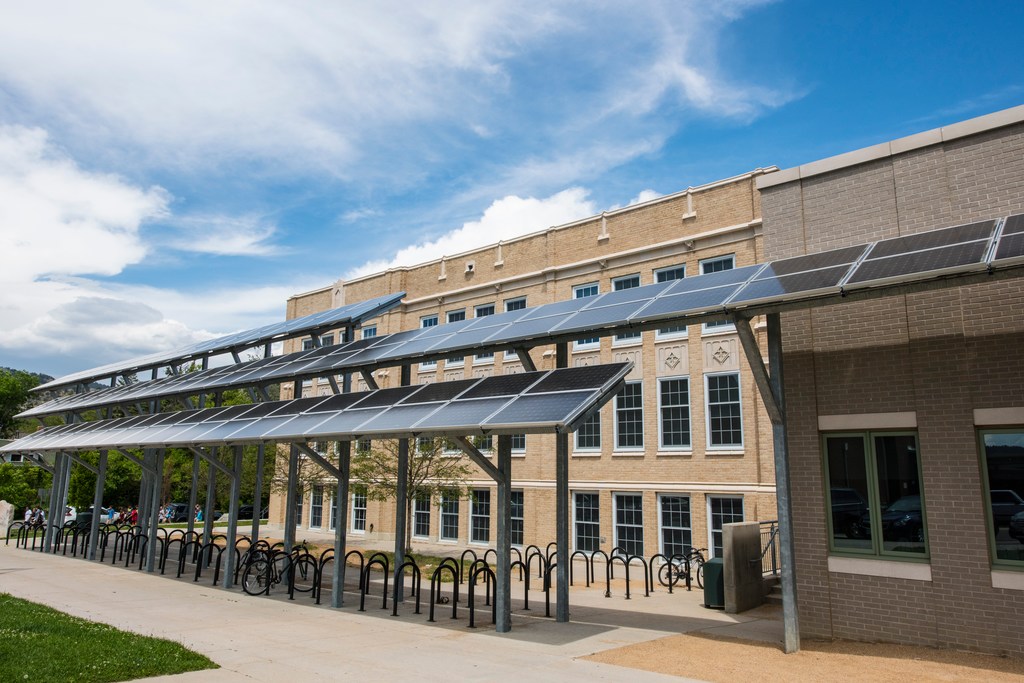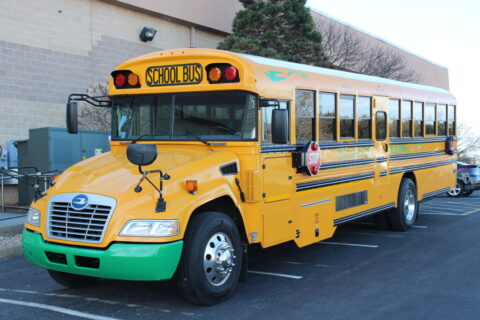
As the school year commences yet again for young people across America, we want to shine a light on the many ways local K-12 schools are helping to advance the country’s transition to clean power—by installing solar power and battery storage, helping to build a renewable energy workforce, and switching from diesel to electric school buses—all while saving money and improving children’s health, thanks to cleaner air.
Nearly 55 million students attend about 130,000 K-12 schools in the U.S., and more than 6 million of those students go to schools that use solar power. The growth of solar energy on schools has reached nearly 1 in 10 (almost 9 percent) of all K-12 public schools in the U.S. Coupled with $1 billion from federal government funding to electrify 2,300 school buses across the nation and other resources to improve health and safety, schools are becoming beacons of clean energy in most communities, and saving money in the process.
For example, a school district in rural Arkansas made national headlines in 2020 after saving more than $1 million in two years by switching to solar, then raising teacher salaries by up to $15,000 a year. One longtime teacher in the district told reporters the raise allowed her to quit the second job she’d had to work for her entire career.
In addition to saving money on energy costs (after salaries, power bills are typically the most expensive cost for schools), clean energy installations also are pathways for the next generation of clean energy workers. An estimated 500,000 clean energy jobs will be needed by 2030 as a result of a series of clean energy policies adopted between 2021–2022 that will funnel $500 billion to super-charge America’s clean energy economy.
K-12 schools are becoming incubators for our future clean energy workforce by teaching about renewable energy, engaging in hands-on STEM (science, technology, engineering, and math) research, and training students for solar careers. Schools are among the first opportunities to prepare our children to help build a better future. For example, in Denver Public Schools’ Renewable Energy Academy, high school students begin preparing for employment as solar installers. The job is expected to become one of the country’s fastest growing occupations over the next decade.
Schools also are combining solar with battery storage to manage their energy consumption from the grid and provide back-up power to their buildings. In Albuquerque, New Mexico, the solar and storage under installation at Atrisco Heritage Academy High School soon will enable the school to reduce electricity bills by bringing down peak energy demand. The district plans to make it a resilient campus that can stay open for both students and community members during power outages and climate emergencies.
At U.S. Energy Foundation (EF), we work across state and local venues to accelerate the transition to a clean energy economy by supporting policy solutions that create robust, competitive markets and the benefits they bring. We are focused on helping states and local jurisdictions to maximize the benefits available to them via Inflation Reduction Act programs, which offer a great opportunity for electrifying school buses. The transportation sector is responsible for about 30 percent of U.S. greenhouse gas emissions and consumes roughly 70 percent of the oil used in the U.S. Grantees, supported by EF, seek to reduce energy use and pollution—especially in the most impacted communities—through policies that improve efficiency and promote electric vehicles. Clean buses provide health benefits to children in particular. Diesel buses have been linked to adverse health outcomes in both children and adults, posing a particular risk to those with respiratory issues such as asthma, which disproportionately affects low-income, Black and Latine/x communities.

As part of the $5 billion Clean School Bus Program that will help replace diesel school buses with electric buses over the next five years, the U.S. Environmental Protection Agency is on the brink of investing another $400 million in promoting electric school buses. This time, the agency will prioritize high-need school districts and low-income areas.
There’s even more good news for clean energy schools around the country:
- Portland Public Schools in Oregon recently adopted to no longer allow gas-fired equipment in any of its new buildings and will phase it out of all existing buildings by 2050.
- Liberty County School System in Georgia installed solar panels that are expected to save the school district around $6,000 per year in energy costs.
- K-12 public schools in Southwest Virginia are eligible to apply for a program to fund campus solar arrays and educational opportunities in the solar field.
- A St. Paul, Minnesota, high school expects to reduce its natural gas use by more than half with the installation of a ground-source geothermal heat pump system.
- Dexter Community Schools in Michigan is bringing solar power to its campus to provide clean energy to surrounding schools, while also serving as a teaching tool.
- Schools in Pennsylvania are both adopting solar panels next to school buildings that provide 100 percent of the district’s electricity and creating job pathways for students going into the growing solar installation field.
Our schools should be clean-powered, resilient centers in the community where students, families, and community members can learn about how to help build a brighter future together. They are one venue among many where advocates are making progress in the effort to curb carbon emissions and avert the worst impacts of climate change.
